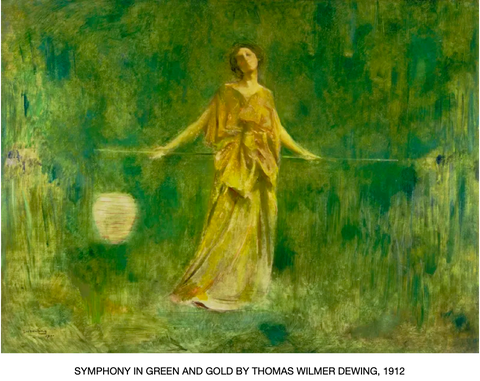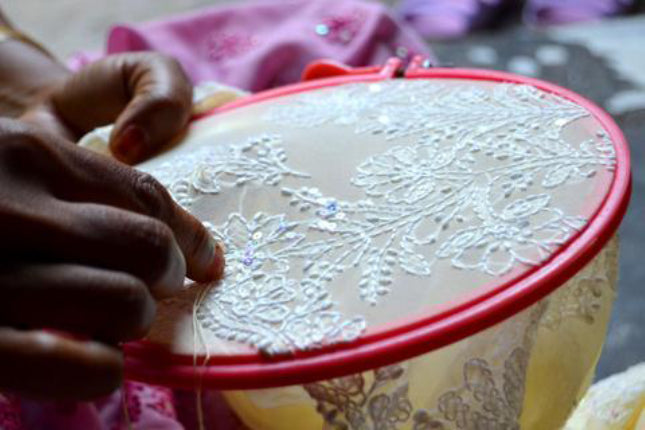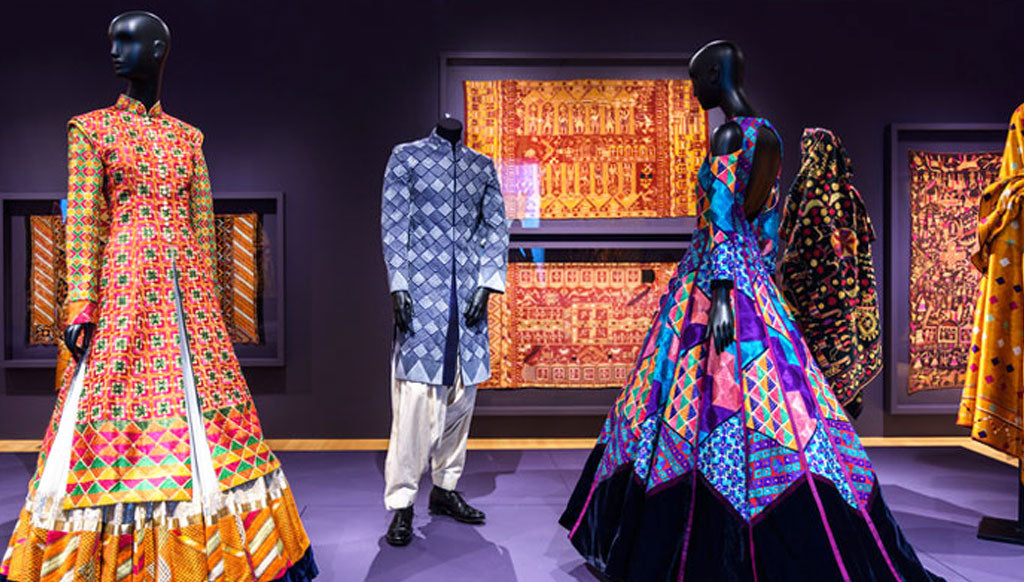Introduction
You might say that decades of history, society, and scientific endeavor have "coloured" the way we see colour. An entire pallet of five hues was produced by the invention of the first pigments as early as 40,000 years ago: red, yellow, brown, black, and white. Since then, the history of colour has been constantly discovered through travel or scientific development.

The rainbow only contained five colours until Sir Isaac Newton, who was enamored of the purportedly mystical characteristics of the number seven, added orange and indigo to the spectrum in 1704.
The rainbow's colours may vary in many cultures, and we find even more distinctions when we go further into their cultural history. In other words, our perception of colour—even how we perceive it—is more a function of upbringing than of nature.
Significance of colours in India
In India, colour symbolism has a long history. It was primarily connected to the three Gunas (qualities), which governed movement in the universe.

Pink, yellow, red, and orange are light, vibrant hues associated with joy, wealth, and passion. Saffron colour conjured the sacrifice of valiant soldiers, whereas turmeric yellow was associated with lucky spouses. Rajput people donned saffron or kesariya colours when their cities were under attack by hostile forces. To indicate their sexual prowess, women referred to their husbands as kesariya. Dark hues like dark green, blue and brown have historically been associated with low rank, misfortune, filth, and notoriety.
Social classes, caste systems, and place of birth were all associated with colour symbolism. White was the hue associated with the brahmin caste, red with the Kshatriyas, yellow with the Vaishnavas, and blue-indigo with the Shudras. It can be claimed that what was coloured was impure, whereas the purest substance, white, was refined and associated with detachment.
Colours and Banarasi Weaves
Banaras jamdanis are incredibly magnificent , and by far the most premium weaves. These weaves are superior to the Dhakai Jamdani and are given multiple names according to the primary colour of the body. Pitambari for yellow, Neelambari for blue,Raktambari for red, and Shwetambari for white.
These Sarees, woven in the sacred city of Varanasi, have an ethereal ambience that sets them apart. These alluring art miracles take an artisan from weeks to months to weave. These have been and will always be a legacy for the Grandmother to pass on to the next generation.
History of Colours: Colour-coded tales
Red

Red, which comes from ochre, was the first colour utilised in painting. A red ochre plaque with symbolic carvings of triangles, diamond shapes, and lines dating to 75,000 years ago is also the earliest specimen of cave art discovered. This paint has been dated to 100,000 years ago and is considered to have been used to decorate bodies and even cave walls.
With its metaphorical appeal frequently taken from blood, conjuring power, virility, and fertility, red seemed to be the first colour (other than black and white) to be called in every culture.
In India, Red is considered a vibrant and constantly exhaling Agni (fire) in the observer's eyes. It evokes terror and is connected with Durga, one of the most renowned gods in Hindu mythology, whose fiery persona is accentuated by her almost-red eyes and tongue. Red, the perfect colour for a bride's attire, also represents purity. Indian culture has a profound connection to the colour red.
Fun Fact: The first colour a baby sees is Red
Blue
Despite its recent linguistic arrival, blue is the most popular colour globally. Since the Middle Ages, artists have painted the Virgin Mary wearing a costly bright blue gown rather than one with a religious significance. The gemstone lapis lazuli, found in a specific mountain range in Afghanistan for many years, is where the distinctive colour originates. This priceless substance attained widespread acclaim by being used to embellish the Iranian Qur'an and Egyptian funeral paintings.

In India, For instance, Lord Krishna, maybe one of India's most beloved gods, is connected to the colour blue. One international survey that included ten nations from four continents found the colour blue quite popular. It tends to have a calming effect, which is one reason. Due to the natural associations of blue—seas, lakes, rivers, and skies—students who took IQ exams with blue covers performed somewhat better than those who took tests with red covers.
Fun Fact: It is believed that the colour blue promotes creativity and productivity. For this reason, blue is a popular primary colour for workplaces.
Yellow
Few past painters have been recognised for using yellow, with Vincent van Gogh and J.M.V Turner being the most noteworthy exceptions. Turner utilised the experimental paint Indian Yellow, a brilliant pigment made from the urine of cows fed on mangos; in his watercolours, Turner used manufactured Chrome Yellow, a lead-based colour known to induce insanity, for bolder accents. Vincent van Gogh also used this vibrant and cheery colour to paint his starry nights and sunflowers.

In India, the colour Yellow is considered to be saintly. Women in Indian history embraced the colour yellow, which denotes holiness, as a critical herbal element (turmeric) while applying it to their bodies and faces. In a nation where religion is deeply ingrained, the powers and fabled lives of the gods are where most colours have their origin.
Fun Fact: In China, yellow is regarded as a fortunate hue.
Green
Although green conjures up images of nature and rebirth, some of its hues have historically been among the deadliest. Scheele's Green, a vivid green pigment infused with the hazardous chemical arsenic, was created in 1775 by Swedish scientist Carl Wilhelm Scheele. Scheele's Green was even employed in the wallpaper of Napoleon Bonaparte's bedroom, and historians think that the colour contributed to the revolutionary's demise in 1821.

In India, Since green represents nature, it is a representation of God. India is a nation that is rich in heritage, culture, and great history.
Fun Fact: Green was associated with inconstancy, treachery, and dependability during the Middle Ages.
Orange
Orange is the only hue in English with fruit as its namesake. Approximately 4,500 years ago, oranges were initially domesticated in China and transported west via the Silk Road. They traveled to Northwest India, where orange trees were planted and marketed. The Sanskrit name for an orange tree, narrangah, served as the basis for several languages, including Naranjo in Arabic and Naranja in Spanish.

The Sanskrit word for orange was corrupted into the English term. It became "an orange" because people confused "a range" for "an orange."
Geoluread (yellow-red) was the English name for the colour before the fruit came, but orange took control in the 16th century. However, in specific languages, the two have been bifurcated.
Fun fact: Orange was a prominent colour in many of Vincent Van Gogh's works.
Purple
Purple was the first colour to be created synthetically. W.H Perkin, an 18-year-old chemical student, was instructed to use coal tar in an experiment to discover a malaria treatment in 1856. Even though he failed, he was amazed by what occurred after he immersed a piece of fabric into his coal alum and chromic acid mixture: the material emerged purple and retained its colour. After his "mauveine" dye was mass-produced, he obtained a patent for it and became quite wealthy.

Purple had been exceedingly costly; the ancients had to squash 12,000 murex sea snails to obtain just one gramme of Tyrian purple, but Perkin's discovery gave rise to the "Mauve Measles" fashion trend, as Punch magazine dubbed it.
Fun fact: The fear of the colour Purple is called Porphyrophobia
Black
One of the first hues utilized in painting was black. Bulls and other animals were depicted by paleolithic painters between 18 and 17 centuries prior in the French cave Lascaux. They used charcoal and then turned to burn bones or powdered manganese oxide to produce darker colours.

Black had favourable connotations for the ancient Egyptians since it was the colour of fertility and the rich, dark soil that the Nile inundated. It was the hue of Anubis, the Egyptian god of the underworld, who appeared as a black jackal and provided the deceased with protection from evil. The underworld, which was divided from the residing by the river Acheron, whose water ran black, was symbolised by the colour black to the ancient Greeks.
The Impressionists shied away from using black paint because they believed that spaces of darkness should be filled with colour, but American painters in the 1950s and 1960s rediscovered black with fury. Ad Reinhardt, Richard Serra, and Frank Stella produced monochrome black paintings without additional content beyond the paint itself. Together, these artists demonstrate that black is a complex hue with many combinations, tones, and textures.
Fun Fact: Black is not represented on a conventional colour wheel. Since it absorbs all other hues in the visible spectrum, it is typically thought of as a non-colour.
White
White is the lightest and most achromatic colour (having no hue). It is the counterpart of black and is the hue of things like milk, snow, and chalk. All visible light wavelengths are reflected and scattered by white objects. Blue, red, and green lights are combined to generate the colour white on computer and television screens. The ancient civilisation In their vibrant cave paintings, Paleolithic painters utilised calcite or chalk mixed with charcoal and red and yellow ochre, sometimes as a backdrop and other times as a focus.

In India, White is considered devoid of any colour and is the only colour widows are allowed to wear. It is the appropriate hue for funerals and rituals commemorating a family member's passing. White, as a colour, repels all light and shades; thus, when a widow wears white, she disengages from the delights and indulgences of active and regular engagement in society and life around her. This represents the fundamental nature of the colour itself, in principle. The colour white is frequently associated with purity and harmony.
Fun Fact: Despite relatively low overall popularity, white is the hue most adults choose for physical situations.
Colour palettes
The use of colour requires effort. There is no debate, but do you know what's more difficult? Combining complementary hues. The exciting process of choosing colours for a piece of clothing to determine which colour combinations work best together.
Here is a reel from @theculturegully on Instagram, which shows how colour palettes are made.
While quality is always important but in the end, what is visually aesthetic and appealing will catch the viewers’ attention—the appropriate application of colour schemes. The end outcome entails a certain feeling, ambience, or aesthetic.
https://www.instagram.com/reel/CfviW7zF_iU/?igshid=YmMyMTA2M2Y%3D
Conclusion
Beyond their use as adornment, colours have deep meaning. Artists can both access and change our most buried wants and impressions. Shades provide a kaleidoscope of insights into an almost flawless fusion of modernity and history. And perhaps a journey along one of its numerous roads would help you appreciate its pulse.





